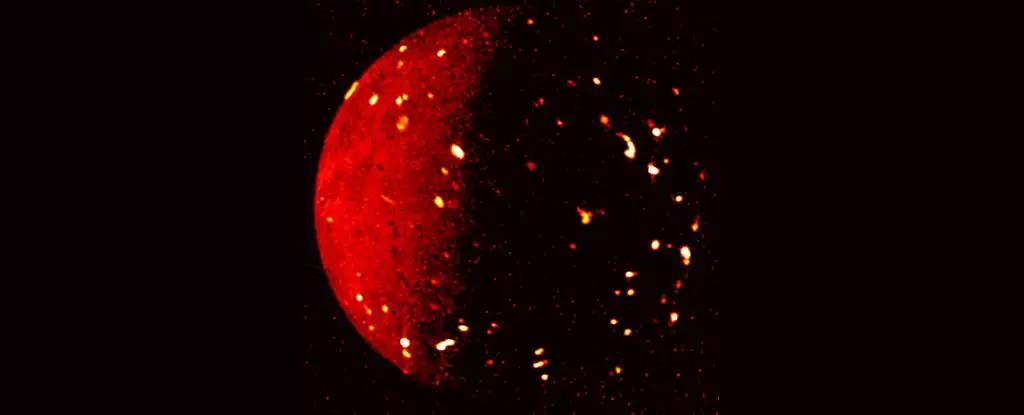Jupiter’s moon Io is a fascinating world that stands out for its intense volcanic activity. The surface of Io is dotted with hundreds of active volcanoes, constantly spewing out lava and gas. Recent observations made by the Juno probe’s Jovian Infrared Auroral Mapper have provided new insights into the volcanic landscape of Io, revealing a world covered in lava lakes contained in caldera-like features.
Io’s volcanic activity is a result of a complex interplay of gravitational forces. The moon’s orbit around Jupiter is not perfectly circular, leading to varying levels of gravitational pull from the gas giant. Additionally, the gravitational influence of other large moons, such as Callisto, Europa, and Ganymede, adds to the stress on Io’s interior, generating heat that fuels its volcanism. This constant gravitational tug-of-war creates a hotbed of volcanic activity on Io’s surface, making it one of the most geologically active worlds in the Solar System.
The recent close flybys of Io conducted by the Juno probe have allowed scientists to study the moon’s volcanic features in unprecedented detail. Infrared observations captured by JIRAM have revealed heat signatures on Io’s surface, unveiling the presence of massive lava lakes. These lakes consist of liquid lava surrounded by high walls, with a crust forming in the center of the molten lake. This new data provides valuable insights into the most common type of volcanism on Io, highlighting the dynamic nature of its volcanic processes.
The Dynamics of Io’s Volcanic Activity
Scientists analyzing the data collected by Juno have proposed theories on how the lava lakes on Io are formed and maintained. It is believed that magma rises from reservoirs below the surface and fills the paterae, creating the lava lakes. The crust of the lava lake moves up and down, causing it to break against the walls of the lake and form a ring of lava around the perimeter. This continuous cycle of magma rising and falling results in the dynamic behavior of Io’s volcanic features, shedding light on the fascinating processes at play on the moon’s surface.
The study of Io’s volcanic activity continues to captivate scientists and space enthusiasts alike. The recent observations made by the Juno probe have revealed new insights into the dynamic volcanic landscape of Io, showcasing the incredible forces at work on this enigmatic moon. As we unravel the mysteries of Io’s geology, we gain a deeper understanding of the complex interactions between moons and planets in our Solar System.


Leave a Reply